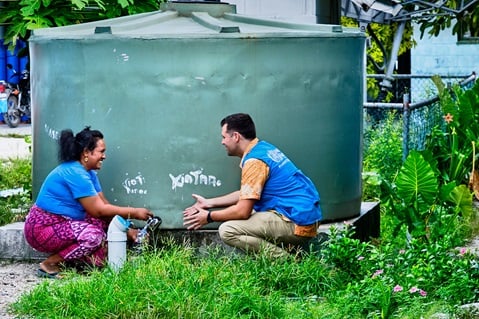Future directions towards hepatitis elimination
There has been much progress in implementing global and regional strategies towards elimination of hepatitis as a public health threat. Vaccination targets are largely met across the Region. However, large gaps remain in ensuring that people know their status and are connected to treatment services. Promotion of health literacy and awareness among the general public and health care providers, addressing the barriers of stigma and discrimination, and engaging civil society and affected communities will be important. Policy making need to ensure people can seek out health-care services for hepatitis without fear of judgement or repercussion, particularly with respect to gaining or maintaining employment, education and other opportunities.
With countries developing national comprehensive action plans, costing and financing the various programmatic elements will be important. Hepatitis services need to be included within universal health coverage discussions. Strong data collection and surveillance systems will support evidence generation for policy, decision-making and programmatic refinements as well as financing decisions. The data gap is substantial as very few countries in the Region can monitor patients across the care continuum of testing, treatment and viral suppression for HBV or cure for HCV. Hepatitis surveillance and patient monitoring should be integrated into existing health information systems in order to inform programme planning and monitor progress of the national viral hepatitis response.
Immunization to prevent hepatitis B among children can be augmented through coordinated efforts using the reproductive, maternal, newborn and child health platform to address MTCT of HBV along with HIV and syphilis. Optimizing existing prevention interventions can further reduce new transmissions. This includes ensuring HBV vaccination for adults at risk of infection, safe injection practices, safe blood and transfusion services, plus harm reduction interventions for people who inject drugs. Prevention of new infections among adults at risk, particularly those at high risk of exposure such as health-care providers and key populations, is important, including synergizing prevention for other bloodborne infections such as HIV.
Only a minority of people infected with viral hepatitis B or C are actually diagnosed, and only a fraction of those diagnosed receive treatment. High out-of-pocket costs to patients remain major barriers to accessing testing, confirmation of screening tests and treatment. Social protection through health insurance and government financing of hepatitis prevention, treatment and care services has progressed, but remains challenging in many countries, irrespective of socioeconomic income category. There are multiple factors affecting access to treatment. These include regulatory procedures for drug registration, inclusion in national essential medicines lists, inclusion for health insurance reimbursements and prices of medicines, among others. While there is improving access to cheaper generic medicines in the Region, financing of medicines and treatment remains challenging. Increasing access to testing and treatment will require reducing costs by linking hepatitis care to pre-existing programmes and services and including these services in national health insurance or government financing mechanisms.
In summary, there is still much work to be done to reach the targets set for 2020. It is vital that Member States, WHO and partners work together to share lessons learnt, information and mutual support to eliminate viral hepatitis as a public health threat in the Region by 2030.





